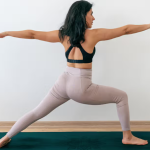Has social media changed the way we view and do yoga? Is there something to be found in a partnership between the ancient science of yoga and the infant of social media?
I’m a bit of a dinosaur when it comes to social media. I’m rubbish at tweeting, I mainly post holiday snaps on Facebook and I prefer good old-fashioned email to the plethora of other social media options out there. It all seems so overwhelming, but in the first decade of the 21st century social media burst onto the online scene and became a global phenomenon, and yogis are no exception. It’s constantly changing the way we live, work, think and interact, and it’s here to stay.
A Brief History of Social Media
For those of you out there who, like me, aren’t quite sure which one does what and when they arrived on the online scene, here’s a brief timeline of the history of social media:
1997 – The first ever recognisable social networking site, Six Degrees, was launched. It was called Six Degrees based on the concept of there being only six degrees of separation between every human on the planet. It closed in 2001, but at its height it had around 3.5 million members.
2003 – Before there was Facebook there was MySpace, which did not hold up well in the social media competition. However, in early 2013, it staged a comeback with the younger generation by reinventing itself as the social platform for music and entertainment.
2004 – Facebook: the behemoth of social networking sites, famously set up by Mark Zuckerberg in his college dorm. It now has over 1.4 billion monthly active users.
2005 – The video-sharing platform YouTube was set up by three Paypal employees and grew exponentially. On December 21, 2012, Gangnam Style became the first YouTube video to surpass one billion views.
2006 – Twitter started life as an SMS-based, peer-to-peer messaging service. The basic concept is that messages are all 140 characters of less, leading to a haiku-like style to their content. Nowadays, it’s a global source of breaking news and information.
2010 — Instagram is currently the number one photo-sharing social platform. Only two months after it launched in October 2010 it had 1 million users. Users are described as having an ‘Instagram persona’, through which they ‘share lifestyle moments’.
The New ‘Social Yogi’
In the 1940s and 50s, early pioneers of yoga began trying to bring yoga to the people, and if they were around today they’d have a lot to thank social media for. From a tiny group of remote yogis practising in solitude in the foothills of the Himalayas we now have a global community of millions and millions of yoga practitioners sharing their experiences online.
No longer is yoga considered niche or hippy, it’s established itself as one of the leading forms of fitness around the globe, in the U.S. alone over 20 million people consider themselves practicing yoga students. For yoga teachers, gone are the days when leafleting and the Yellow Pages were the only forms of marketing. There are now a multitude of free marketing tools to promote themselves and their businesses, with the potential to reach thousands of new clients.
Some teachers, such as Tara Stiles, have taken this to the next level, launching Youtube channels, lifestyle blogs, and attracting hundreds of thousands of views.
Inspiration or Clique?
There are a slew of yoga stars that have achieved the dizzy heights of thousands, even millions of followers on their Instagram or Twitter accounts: Rachel Brathen, Kerri Verna, Kino Macgregor, Acroyoga, Tara Stiles, Kathryn Budig, Laura Sykora and Masumi G, gypset goddess, Yogaracheal and Brian Miller to name but a few! The Instagram stars in particular are a certain breed of yogi, they even have a special title; they are ‘insta-yogis’. They’re generally slim, beautiful (male or female), freak-show-level bendy and seemingly exist on a diet of kale smoothies. Their clear dedication to āsana practice and stunning backdrops (and bodies) are definitely inspirational — but is it realistic?
To me, looking at the insta-yoginis takes me back to my school days, playing extra-curricular lacrosse for fun. Then we were sent out to play competitively against proper schools that had lacrosse as a sort of religion. The girls we played against were a different species of girl, with their bronzed, burnished limbs, and their blonde hair coiled up in massive, carelessly cool coils. They sported the latest kit which made ours look like it was hand-crafted using bits of flint from the stone ages. They won, always.
I see these Instagram yoginis like those girls — but instead of just being popular and cool at school, they’re popular and cool everywhere. On the one hand they can be very inspirational, and have certainly gotten me out of bed early to get my practice in before the kids wake up, but it’s hard to deny that element of ego that is involved with posting photos of ourselves in our best poses and constantly checking how many likes you’ve fetched.
What About Online Classes?
The other day I randomly chose to follow a lesson from a New Zealand duo on YouTube. The intro voiceover assures me that this workout will lead to ‘strengthening of bones and increased energy’. Greg and Al, our likeable yoga instructors, do sensibly remind viewers that there are no substitutes for a real yoga class and offer encouragement to seek one out.
Then the lesson begins. I have to say, it was at that point when I realised why this particular lesson had over 1.5 million views. Greg and Al look abs-solutely, Ancient-Greek-God-like, and my attention from that point on was not 100% on the yoga I was being told to do…
However, there are some brilliant online yoga lessons out there, especially if you already have an established yoga practice. In conjunction with attending real-time classes with a teacher who can check your poses and keep you from injuring yourself, I would recommend going online to explore some new and exciting yoga styles.
Yoga Hashtags
If you want to be a social media-savvy yogi, here are a few of the more popular yoga hashtags that you ought to know and use…
#yogaeverydamnday — Used by bikini-clad, beach-babe yogis all over the world, this hashtag was started by @yoga_girl, Rachel Brathen. With over 1.7 million Instagram followers, she is the Queen of Surfboard yoga, whose aim is to take yoga “from social media to social mission.”
#beachyoga — There is something about the combination of sun, sea, sand and bronzed bodies that seems to pull in the viewers. Can’t think what… @beachyogagirl and @yoga_girl are just two of the poster girls for this particular hashtag.
#namaste — A Sanskrit form of greeting, it literally means ‘a bow to you’. This has become a standard greeting for yogis to identify themselves on social media.
#yogi — A yogi used to mean a very thin Indian man sitting in Lotus Pose, now it’s anyone who gets on their mat and gives yoga a go.
#love — Is the most popular hashtag ever. And that’s not a bad word to spread around.
Social Media as a Positive Yoga Tool
As great as social media all is, it’s not without its risks where your practice is concerned. Here are a few ideas to keep in mind amongst all the gloss and glitter of the online world of yoga:
- Don’t get distracted. It’s very easy to spend too much time looking at other people doing yoga and not actually doing it yourself. To really utilise yoga and social media, you need to make sure that it isn’t actually becoming another obstacle to yoga.
- Keep yoga pure. Guess what one of the most popular yoga hashtags is. #yogapants, and it’s not hard to guess why! Most of these shots tend to involve close ups of what inhabits our yoga pants – yoga bums. I was a bit horrified at how sexualised a lot of the yoga images were online. Try to keep in mind what it is you’re sharing when you post an image: is it your pose or the body doing it?
- Keep yoga real. Remember that while it’s fine to get inspired by all the yoga online, it’s the real yoga that really counts. Yoga in halls, rooms, in your own home. Yoga that doesn’t necessarily look or feel pretty but that gets you on your mat, out of your mind and into your body.













